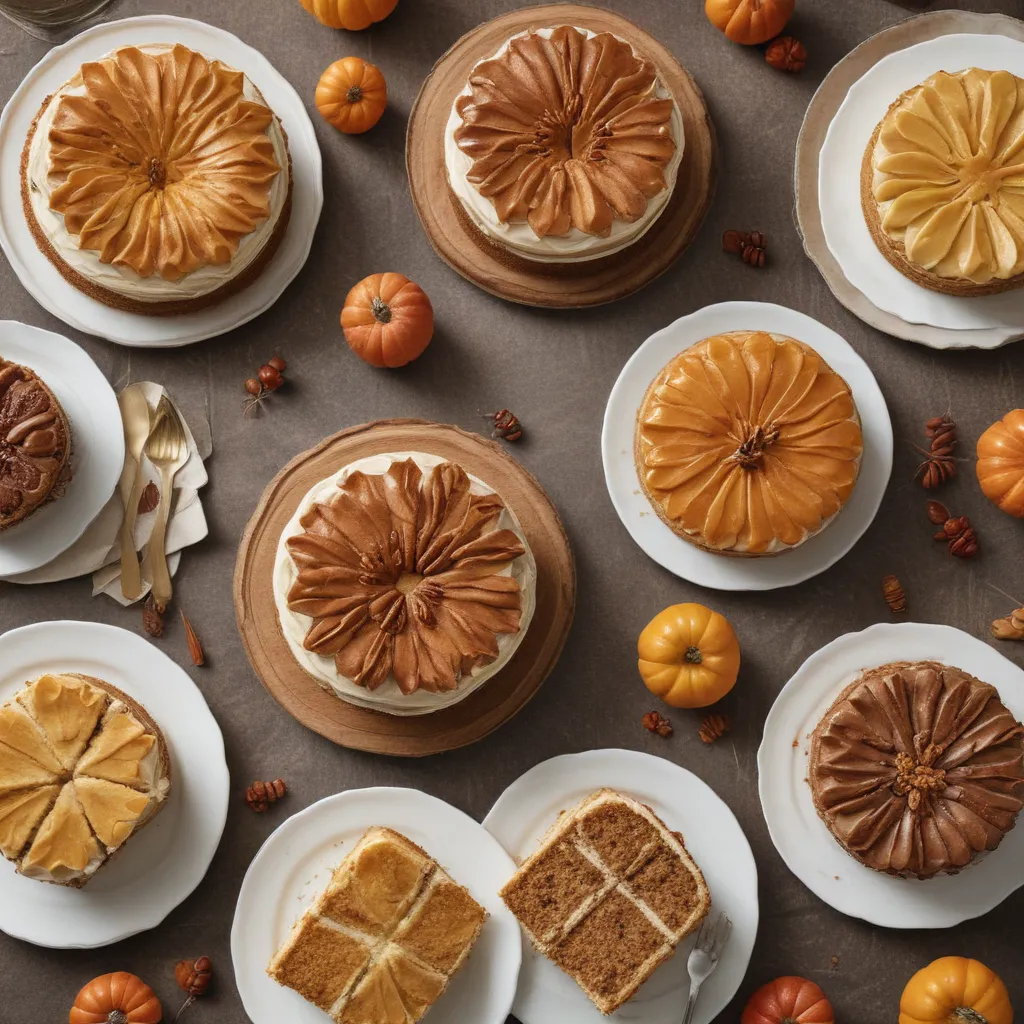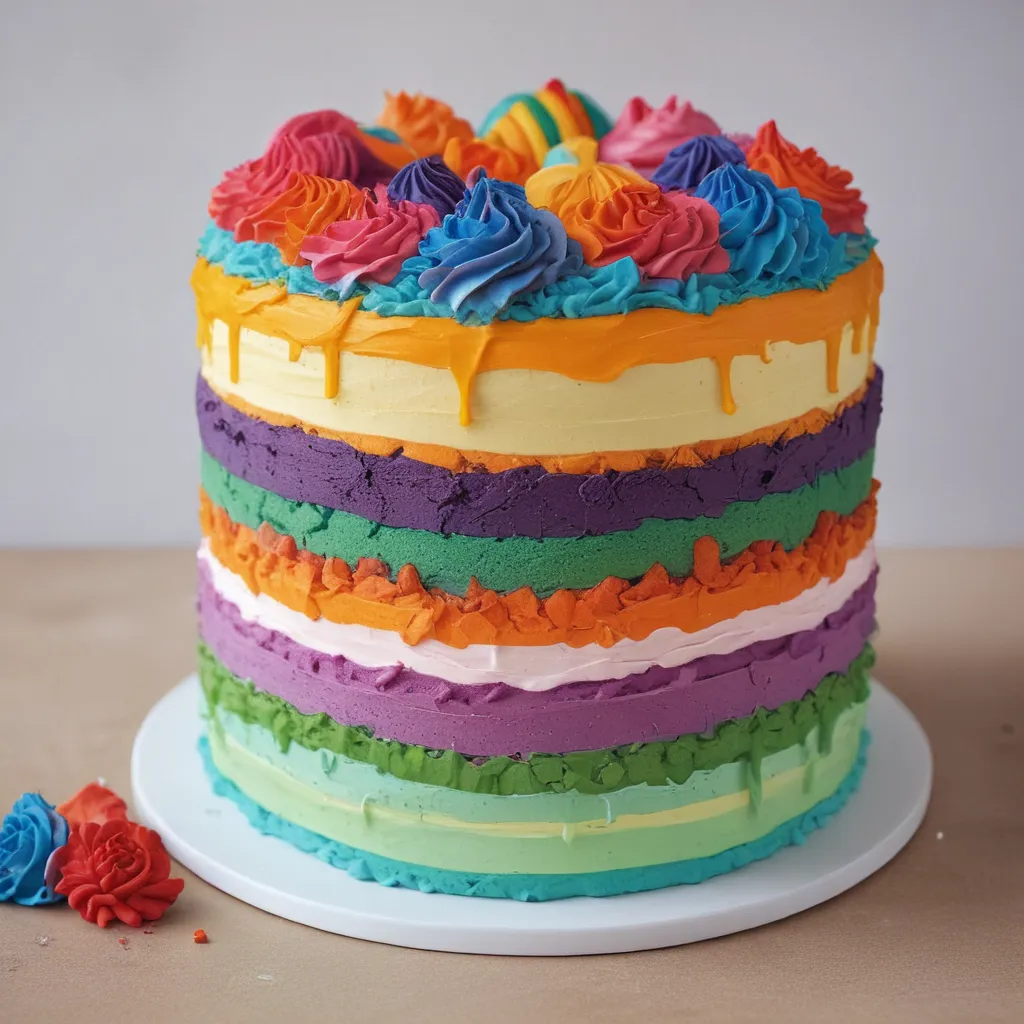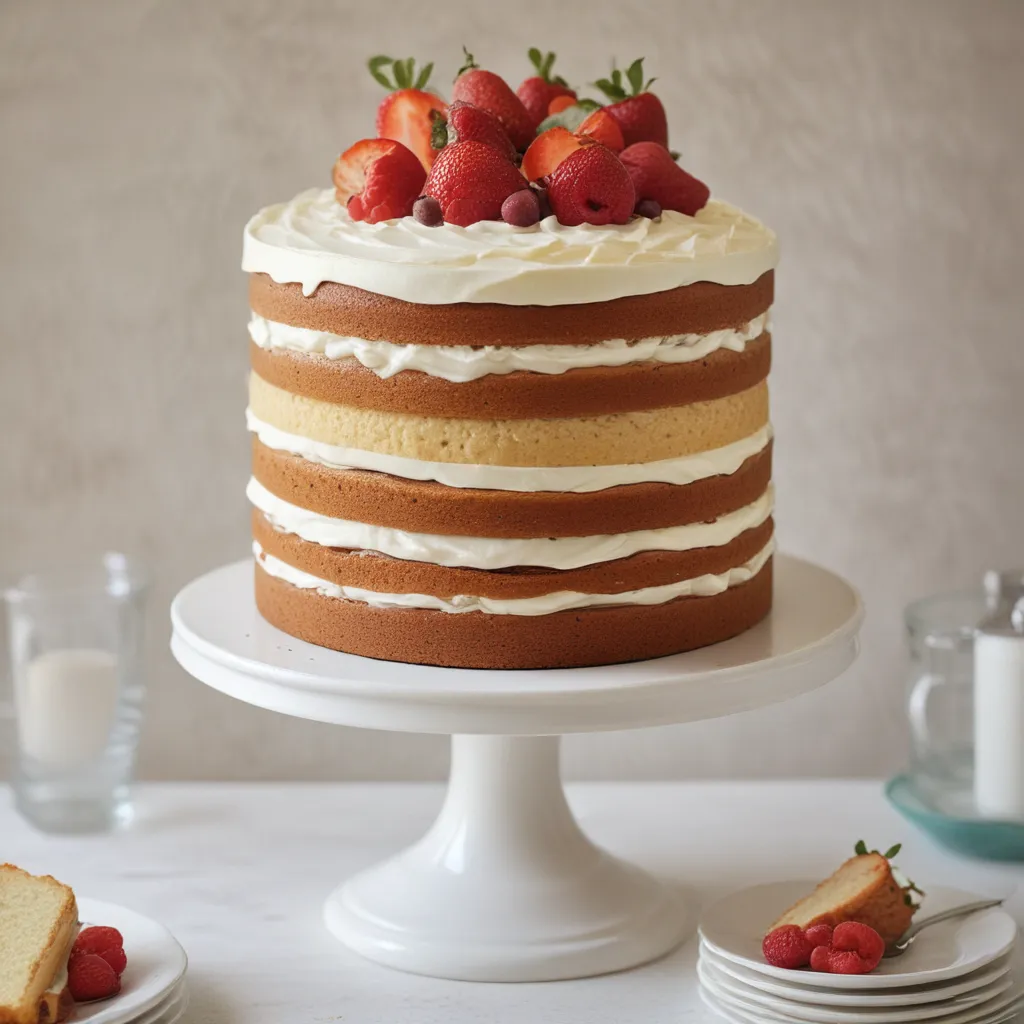Ah, the elusive quest for the perfect cake – moist, tender, and bursting with flavor. As a self-proclaimed cake connoisseur, I can attest that this is no easy feat. But fear not, my fellow bakers! I’m here to share the secrets I’ve uncovered over the years, honed through countless trials, errors, and an unhealthy amount of cake testing (all in the name of research, of course).
The Science Behind Moist, Tender Cakes
Let’s start by delving into the science behind what makes a cake moist and tender. You see, it all comes down to the delicate balance of wet and dry ingredients, as well as the way they interact during the baking process. Think of it like a Broadway musical – each ingredient has its own role to play, and if they don’t work together in perfect harmony, the whole production falls flat.
One of the key players in this cake-making symphony is fat. Yes, that seemingly sinful ingredient is actually the secret to achieving that elusive moist texture. Fat, such as butter or oil, coats the flour particles, preventing them from forming too much gluten. Gluten, while essential for structure, can also make cakes tough and dry if it’s allowed to develop too much. By strategically incorporating the right amount of fat, you can tame that gluten beast and keep your cakes tender and supple.
But it’s not just about the fat – the sugar in your recipe also plays a crucial role. Sugar helps to retain moisture by interfering with the formation of gluten, and it also caramelizes during baking, adding depth of flavor and that irresistible golden crust. It’s like a cake-baking superhero, swooping in to save the day with its magical moisture-locking powers.
And let’s not forget about the liquid ingredients, such as milk, eggs, or even coffee. These wet components hydrate the dry ingredients, creating a batter that’s perfectly balanced and ready to rise to the occasion (pun intended). The key is to strike the right ratio between the wet and dry components, ensuring that your cake batter is just the right consistency – not too thick and not too thin.
Mastering the Art of Cake Mixing
Now that we’ve covered the science behind moist, tender cakes, let’s dive into the art of mixing. This is where the magic really happens, and where your skills as a baker can truly shine.
One of the most important steps in the mixing process is to ensure that your ingredients are at the right temperature. Cold eggs and butter can wreak havoc on your batter, leading to dense, heavy cakes. Instead, I recommend letting your ingredients come to room temperature before you start mixing. This allows them to blend together seamlessly, creating a smooth, even batter.
Another crucial step is to avoid overmixing. I know, it can be tempting to just keep going, but resist the urge! Overmixing can develop too much gluten, resulting in those tough, chewy cakes we’re trying to avoid. Instead, mix your batter just until the ingredients are combined, being careful not to overwork the dough.
And speaking of mixing, the order in which you add your ingredients can also make a big difference. I generally like to start with the dry ingredients, mixing them together to ensure even distribution of things like flour, baking powder, and spices. Then, I slowly incorporate the wet ingredients, folding them in gently to maintain that all-important air pockets.
Baking Techniques for Moist, Tender Cakes
Now that we’ve covered the science and the art of mixing, let’s talk about the final stage of the cake-baking journey: the baking process itself.
One of the most important factors in baking moist, tender cakes is oven temperature. You see, if the oven is too hot, the outside of the cake will cook too quickly, leaving the inside raw and gummy. On the other hand, if the oven is too cool, the cake will take too long to bake, resulting in a dry, crumbly texture.
The sweet spot is typically around 350°F (177°C), but I always recommend doing a quick oven test before you start baking. Simply place an oven thermometer in your oven and let it preheat for at least 15 minutes. This will help you ensure that your oven is maintaining the right temperature, so you can bake with confidence.
Another crucial factor is baking time. Cakes can be tricky little buggers, and they often need more time in the oven than you might expect. I find that it’s best to start checking your cake around the 25-minute mark, using a toothpick or cake tester to ensure that it’s cooked through. If the toothpick comes out clean, you’re good to go!
But wait, there’s more! Did you know that the type of pan you use can also impact the moisture and tenderness of your cakes? I tend to favor light-colored, metal pans, as they promote even heat distribution and prevent overbrowning on the edges. Glass or dark-colored pans can sometimes cause the outside of the cake to cook too quickly, leaving the inside undercooked.
And let’s not forget about the importance of proper cooling. Once your cake has finished baking, it’s essential to let it cool completely before attempting to frost or serve it. This allows the structure to set and prevents the cake from becoming gummy or falling apart.
Real-Life Cake Baking Successes (and Failures)
Now, I know what you’re thinking: “Okay, this all sounds great in theory, but how does it play out in the real world?” Well, let me tell you, I’ve had my fair share of both successes and failures in the cake-baking realm.
Take, for example, the time I decided to bake a decadent chocolate cake for my best friend’s birthday. I followed all the tips and tricks I’ve shared with you today, and the result was a moist, fudgy masterpiece that had everyone begging for seconds. The key, I think, was using high-quality cocoa powder and melted chocolate in the batter, which added depth of flavor and a luxuriously tender crumb.
On the other hand, there was that one time I tried to get a little too creative and experiment with a new recipe for a lemon chiffon cake. I thought I had the science down, but somehow, I ended up with a dry, dense disaster that was more like a hockey puck than a delicate, airy confection. Needless to say, that cake ended up in the trash, and I had to do some serious soul-searching to figure out where I went wrong.
But you know what they say – every failure is an opportunity to learn and grow. And that’s exactly what I’ve done over the years, constantly refining my techniques and experimenting with new ingredients and methods. It’s all part of the journey, and I wouldn’t have it any other way.
Putting it All Together: Baking Moist, Tender Cakes with Confidence
So, there you have it – the secrets to baking moist, tender cakes every time. From understanding the science behind the ingredients to mastering the art of mixing and baking, I’ve covered it all. And let me tell you, the satisfaction of pulling a perfectly moist, fluffy cake out of the oven is unparalleled.
But don’t just take my word for it – why not put these tips to the test and see for yourself? Bake a cake at Jax Cake Shop and let me know how it turns out. I promise, with a little practice and a lot of patience, you’ll be baking cakes that will have your friends and family singing your praises.
So, what are you waiting for? Preheat that oven, gather your ingredients, and let’s get baking! Who knows, you might even discover a few secrets of your own along the way.





